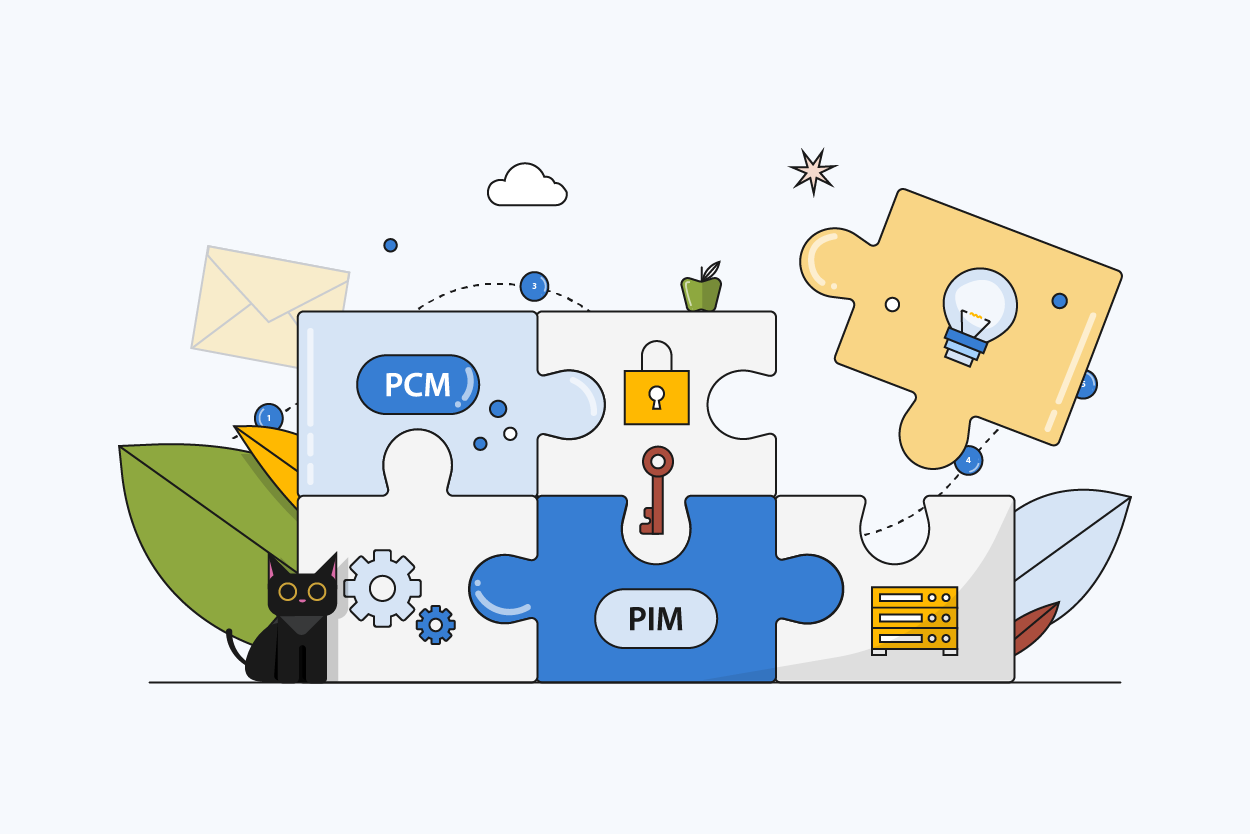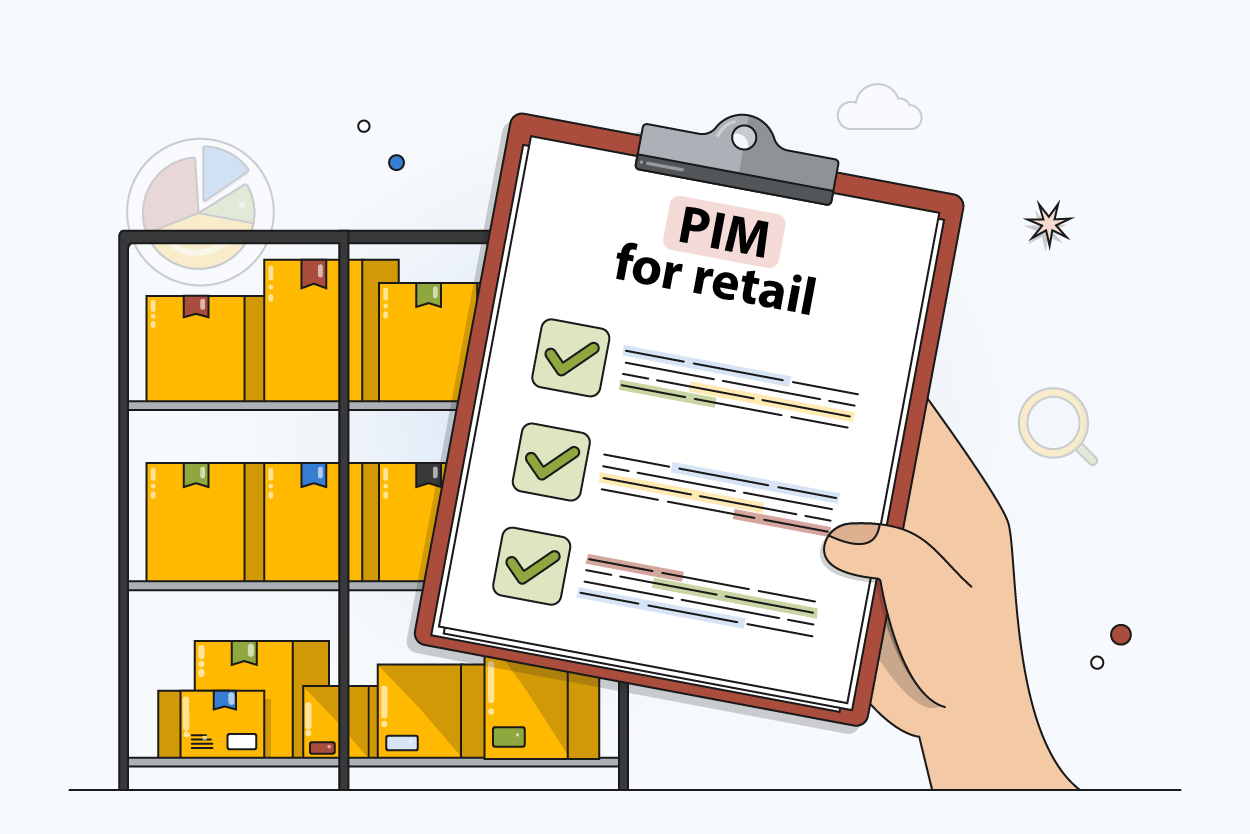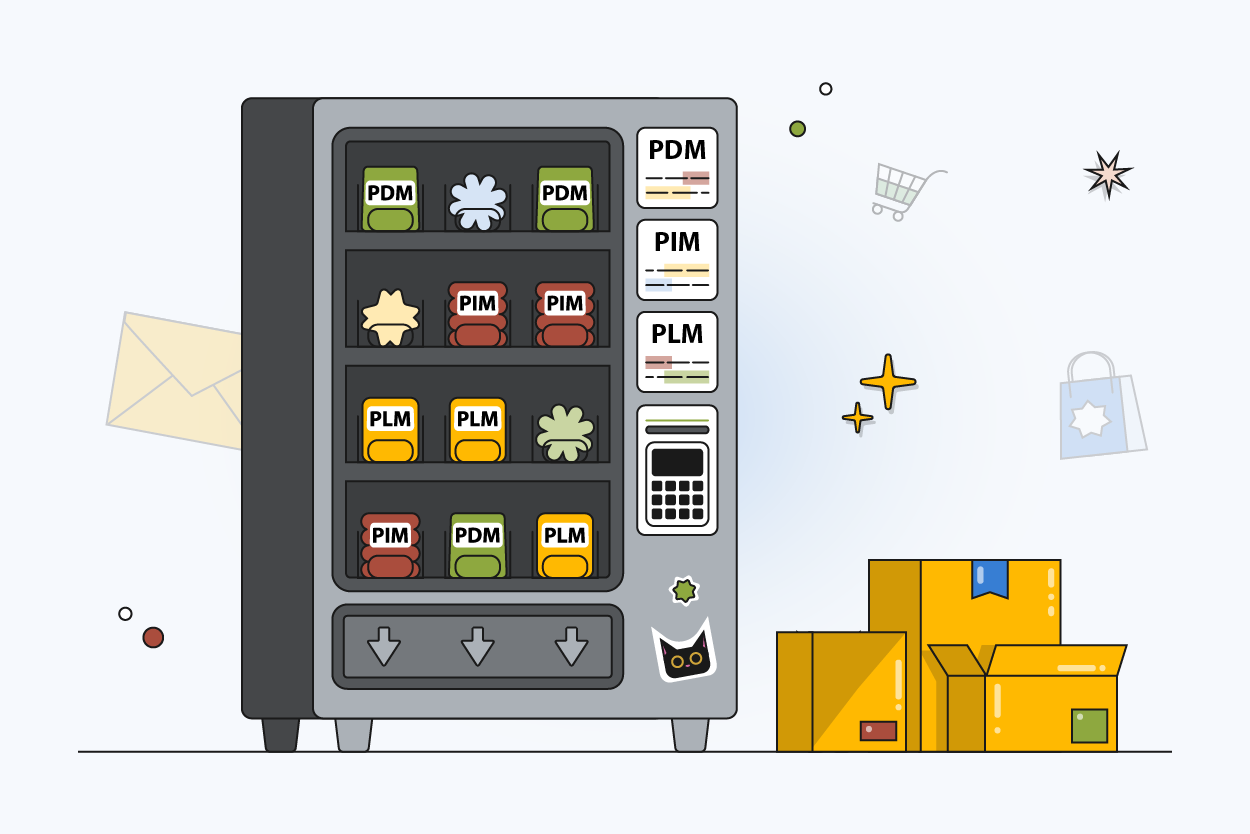Introduction to PIM and PCM
Author name: Mark Chickering

A brief explanation of what a PIM (Product Information Management) and a PCM (Product Content Management) are and their roles in e-commerce and product management.
Understanding PIM and PCM
Product Information Management (PIM) and Product Content Management (PCM) are crucial systems that help businesses manage their product information efficiently. While they may seem similar, they serve different purposes and have various features that distinguish them from each other. Understanding the differences between PIM and PCM is crucial for businesses looking to manage their product information efficiently. While they serve different purposes, their functionalities often intersect, making them essential tools in the e-commerce landscape. By leveraging both systems, businesses can ensure that they provide accurate, consistent, and engaging product information across all their sales and marketing channels.
What is PIM?
Product Information Management (PIM) is a system that centralizes, organizes, and distributes detailed product information. It is a core tool for managing and maintaining product specification data. PIM automates repeatable tasks, speeds up new product introductions and catalog creation, accelerates sales and marketing promotions, and enhances product data quality. It focuses on informing customers about the product, providing all the necessary details that a customer might need to make a purchase decision.
Want to Learn More About PIM?
Now that you understand the basics, dive deeper into Product Information Management with our comprehensive guide covering features, benefits, implementation strategies, and real-world applications.
What is PCM?
On the other hand, Product Content Management (PCM) is a system that manages the content associated with a product. This includes images, videos, marketing materials, and other content accompanying a product. PCM is a feature offered in almost all e-commerce solutions by default and mainly offers data enrichment capabilities. It focuses on providing an extra layer of detail that enhances the product's appeal to customers.
The Intersection of PIM and PCM
While PIM and PCM serve different purposes, they often intersect in their functionalities. Both systems act as central repositories for product data and allow for a single trusted source of product truth. They aggregate details and syndicate them to various sales and marketing channels, ensuring consistency and accuracy of product information across all platforms. PIM like PIMinto can maintain and distribute content to multiple channels, reducing the need for both a PCM and PIM in many cases.
The Importance of PIM and PCM in E-commerce
In the e-commerce landscape, both PIM and PCM play crucial roles. PIM ensures that customers have all the necessary detailed product information to make informed purchase decisions. At the same time, PCM enhances the product's appeal by providing rich, engaging content. They help businesses manage product information efficiently, improve customer experience, and drive sales.
The Role of Product Content Management (PCM)
Understanding PCM
A Product Content Management (PCM) is a system that provides content management functionality and acts as a repository for product information throughout the product life cycle, from manufacturing and logistics to the sale of a product.
PCM: More Than Just Data Management
In addition to managing product data, PCM also organizes and provides the ability to manage attributes related to a product. This includes supplier, stock, warehouse information, logos, and any associated marketing material. This data is maintained in a single place to ensure a consistent, high-quality multichannel experience.
PCM and E-commerce
PCM can play a vital role in e-commerce. It is a good tool for managing and distributing product-related content to offer an excellent user experience and boost brand and product awareness and reputation. Strong content helps increase and expand online and retail sales. PCMs introduce efficiency in content distribution across any channel the company uses to communicate with customers, distributors, and retailers.
Benefits of PCM
A Product Content Management solution for managing products online and across different sales channels offers multiple benefits. These include:
- Robust Control of Product Content: A PCM is an easy-to-use software tool that assists in controlling content related to a company's products. This helps businesses track and update web and sales-related product content easily.
- Business Scalability: Product Content Management software offers the additional ability for a business to quickly grow by providing a mechanism for adding new products through a simple management interface.
- Customer Loyalty: By delivering better content and buying experience, customers reward businesses with product and brand loyalty.
- Time Savings: A PCM helps by reducing the time required to perform tasks by content creators related to maintaining product and brand content.
- Reduced Working Costs: Higher content creator efficiencies and increased time savings result in cost savings automatically.
- Brand Consistency: Utilizing a PCM to manage product content ensures that the brand image and product content can be easily edited and modified to maintain alignment with brand policy, delivering a cohesive message to the public.
PCM and PIM: A Powerful Combination
Specialized tools are needed to optimize the management and organization of product information. This is where a Product Information Management (PIM) system excels. A PIM can allow for easy analysis of product content and assist in identifying possible deficiencies. Detailed, accurate product descriptions, attributes, and content improves the user's buying experience and boosts sales. A PCM plays a crucial role in managing product data and enriching them, while a PIM provides the ability to analyze data and identify deficiencies in that data. This allows for data to be normalized and issues to be addressed throughout the product and business life cycle. As such, understanding the role of PCM is essential for any business looking to manage their product information efficiently.
The Role of Product Information Management (PIM)
Understanding PIM
Product Information Management (PIM) systems allow users to create, edit, modify, enrich, and manage detailed product information. PIM centralizes product-related data, and the PIM management interface streamlines updating and managing accurate product information across multiple sales and marketing channels. PIM tools integrate with most eCommerce platforms, customer relationship management (CRM) systems, and enterprise resource management (ERP) software, ensuring up-to-date product information is accessible across your organization.
The Importance of PIM
PIM systems are particularly valuable for eCommerce businesses whose product catalogs are large, contain multiple product lines, or cross various market segments. PIM software acts as a centralized hub for collecting and defining all product information, benefiting your brand in many ways. It shortens the time to onboard products from multiple manufacturers, brands, and suppliers. Provides a mechanism to speed up and coordinate product launches, design marketing campaigns, and open new business channels. This functionality gives employees more time to brainstorm innovative ways to engage consumers.
Key Features of PIM
A PIM solution addresses the complexity of managing an extensive catalog of product data and SKUs by efficiently tracking cross-functional product information like basic data, assets, technical information, marketing information, sales information, localized information, taxonomy, design information, marketing and training material.
The Benefits of PIM
PIM systems offer numerous benefits, including:
- Omnichannel Experiences: PIM makes managing physical and digital product content for each channel much more manageable, enabling product marketers to make on-demand changes and launch new content quickly.
- Personalization: With PIM, sales reps can choose from approved product information and design a customized sales proposal.
- Reliable Data: PIM systems ensure users are working with the latest product information, lowering the risk of using outdated or inaccurate information.
- Centralized Product Information: PIM organizes diverse product data from one or more suppliers, brands, manufacturers, or business systems while ensuring the quality and accuracy of product information throughout its lifecycle.
- Better Marketing: PIM allows marketers to combine product data to build more effective commercial campaigns.
PIM and Your eCommerce Business
PIM systems can benefit any brand, and they're indispensable for companies with complex product relationships, a high number of SKUs, or an omnichannel selling strategy. PIM solutions democratize product data, so supply chain, marketing, sales, and customer service teams are prepared with the data they need to interact with prospects and customers. You need a platform that integrates with premier PIM solutions to dramatically increase receptiveness to your products and decrease your time to market. The role of PIM in managing product information is crucial for any business looking to manage their product information efficiently. By leveraging a PIM system, businesses can ensure that they provide accurate, consistent, and engaging product information across all their sales and marketing channels.
PIM vs. PCM: The Key Differences
Product Information Management (PIM) and Product Content Management (PCM) are two essential tools in e-commerce and product management. While they may seem similar, they serve different purposes and offer unique benefits. While both PIM and PCM play crucial roles in product management, they offer similar but different functionalities and benefits. Understanding these differences is vital for businesses to choose the right tool for their product management needs.
Key Differences
The critical differences between PIM and PCM lie in their functionalities and the level of data management they offer. PCM is primarily about enriching the company's product data, while PIM provides a single system for aggregating and recording data and often governs large product catalogs. Many PIM also offer the capability to automate data processes and include data asset and content management.
While both Product Information Management (PIM) and Product Content Management (PCM) are essential tools in e-commerce and product management, they serve different purposes and offer unique benefits. Here are the critical differences between PIM and PCM:
Data Management
One of the primary differences between PIM and PCM lies in the level of data management they offer. PCM is primarily about enriching the company's product data. It includes adding or deleting product descriptions, adding more product features such as images and attributes, and classifying products. PCM helps consolidate scattered data across the enterprise, enrich the consolidated data, and publish it.
Conversely, PIM provides a single system for recording data and governs large product catalogs. It includes additional mechanisms that apply to B2B systems, providing extra components like data quality, aggregation, and syndication. PIM is the process focused on managing product data, including the processes and technologies employed to market and sell products through multiple distribution channels.
Geographic and Language Capabilities
PIM caters to multiple locations geographically and data in multiple languages, enabling the transmission of consistent and accurate information cost-effectively. This feature is particularly useful for businesses that operate in multiple countries or regions and need to provide product information in various languages. PCM, on the other hand, does not typically include these capabilities.
Automation and Data Processes
PIM also enables automating data processes and includes data asset management. It has automated and trusted data quality processes, enabling data transparency and role-based views for the business. A detailed user concept is thus available for business process management. It also offers pre-built user interfaces that are configurable and editable. One can view channel previews on various commerce systems. PCM does not typically offer these features.
Use Cases
The choice between PIM and PCM often depends on the organization's specific needs. For instance, a distributor that needs to consolidate information from all his vendors and data providers would face data in multiple formats that require normalization, categorization, and quality. This would call for a PIM solution. On the other hand, a manufacturer that requires the distribution of consolidated data through different channels would need data cleaning and enhancement as per each channel's requirement. Thus, he would need a PCM over a PIM solution.
Choosing Between PIM and PCM
When managing product information, businesses often choose between Product Information Management (PIM) and Product Content Management (PCM). Both systems offer unique capabilities and benefits, and the choice largely depends on your organization's specific needs and requirements.
Ready to Choose the Right PIM System?
Use our comprehensive selection guide with 15 critical criteria to evaluate PIM solutions and find the perfect fit for your business needs.
When to Choose PIM
If your organization has no centralized data system that consolidates information, incorporating a PIM system would be crucial. PIM provides a single system for recording data, and the governance of large product catalogs will likely need more than a PCM solution.
Moreover, if your organization operates in multiple countries or regions and needs to provide product information in various languages, a PIM system would be more suitable due to its multi-language capabilities.
When to Choose PCM
If your organization is equipped with tools that allow data aggregation, data quality, and syndication, then you might not need a PIM system. PCM is all that your organization needs to enrich the company's product data.
For instance, if you are a manufacturer that requires the distribution of consolidated data through different channels and needs data cleaning and enhancement as per each channel's requirement, you would need a PCM over a PIM solution.
PIM Systems with PCM Features
It's important to note that some PIM systems come with many features found in PCM systems. These PIM systems can provide a comprehensive solution that caters to product information and content management. Starting with a PIM system that includes PCM features may meet initial e-commerce needs, providing a more cost-effective and efficient solution. Choosing between PIM and PCM is not a one-size-fits-all decision. It requires a thorough understanding of your organization's needs, the specific features of each system, and how they can benefit your business. By understanding the differences and similarities between PIM and PCM, you can make an informed decision that best suits your business needs.
The Intersection of PIM and PCM
While they have distinct roles and functionalities, there is a significant intersection between the two, particularly when it comes to managing and distributing product data. Let's delve into the overlapping areas of PIM and PCM and how businesses can leverage these intersections to their advantage and gain significant benefits. By leveraging this intersection, businesses can improve their data management, enhance the customer experience, and increase their sales and revenue.
The Convergence of PIM and PCM
PIM and PCM are not mutually exclusive systems. In fact, they often work in tandem to manage and distribute product data across various channels. PIM serves as the central repository for all product data, including technical specifications, marketing descriptions, pricing information, and more. On the other hand, PCM focuses on the presentation and distribution of this data across various sales and marketing channels.
PIM and PCM intersect when the product data managed in the PIM system is enriched and formatted for distribution via the PCM system. This process ensures that the product data is consistent, accurate, and tailored to the specific requirements of each sales and marketing channel.
Leveraging the Intersection for Business Success
The convergence of PIM and PCM offers several benefits for businesses. Here are a few ways businesses can leverage this intersection:
- Improved Data Consistency and Accuracy: By using PIM and PCM together, businesses can ensure that their product data is consistent and accurate across all channels. This not only improves the customer experience but also enhances the business's credibility and reputation.
- Efficient Data Management: The integration of PIM and PCM allows businesses to manage their product data more efficiently. Instead of managing data in separate systems, businesses can centralize their data management in the PIM system and then use the PCM system for distribution.
- Enhanced Customer Experience: With consistent and accurate product data, businesses can provide a better customer experience. Customers can access the same product information across all channels, which can help them make informed purchasing decisions.
- Increased Sales and Revenue: By providing accurate and detailed product information across all channels, businesses can increase their sales and revenue. Customers are more likely to purchase products when they have access to comprehensive and accurate product information.
Maximize Your E-commerce Performance with PIM
Discover how leading e-commerce businesses leverage PIM to increase sales, improve customer experience, and streamline operations.
Why PIM is the Better Choice When Lacking Data Aggregation Tools
In the world of e-commerce and digital marketing, data is king. The ability to collect, manage, and distribute product information efficiently and accurately is crucial for success. This is where Product Information Management (PIM) systems come into play. PIM systems are designed to centralize and manage all product data, making it easier for businesses to distribute consistent, accurate, and up-to-date product information across multiple channels. But what if you don't have the tools to aggregate data? This is where PIM systems truly shine, especially when compared to Product Content Management (PCM) systems.
PIM: More Than Just Data Enrichment
While PCM systems are often included in e-commerce solutions by default and offer data enrichment capabilities, they fall short when it comes to data aggregation. PCM systems are designed to enrich product data by adding or deleting product descriptions, adding more product features such as images and attributes, and classifying products. However, they do not offer the same level of data aggregation that PIM systems do.
PIM systems, on the other hand, go beyond data enrichment. They offer additional mechanisms that are particularly useful for businesses that lack data aggregation tools. These mechanisms include data quality, aggregation, and syndication.
Data Aggregation with PIM
Data aggregation involves consolidating multiple data sources and data formats into a single data source. This is particularly useful for businesses that receive product data from multiple sources, such as business systems, suppliers, manufacturers, and other third parties. Without a tool to aggregate this data, businesses would have to manually consolidate the data, which can be time-consuming and prone to errors.
PIM systems automate the data aggregation process, saving businesses time and reducing the risk of errors. They can handle multiple product information formats and synchronize them across multiple channels from a single source. This ensures that all product data is consistent and accurate, regardless of the source.
The Advantage of PIM Over PCM
If an organization is equipped with tools that allow data aggregation, data quality, and syndication, then a PCM system may be sufficient. However, a PIM system is the better choice for organizations that do not have these tools. PIM systems provide a single system for recording data, ensuring that all product information is centralized and easily accessible. This particularly benefits businesses with large product catalogs, as it allows for more efficient data management.
Moreover, PIM systems offer automated and trusted data quality processes, enabling data transparency and role-based views for the business. They also offer pre-built user interfaces that are configurable and editable, allowing businesses to view channel previews on various commerce systems.
While PCM systems offer valuable data enrichment capabilities, they need to catch up regarding data aggregation. A PIM system is the better choice for businesses that lack data aggregation tools. PIM systems enable businesses to manage their product data more efficiently and effectively by offering comprehensive data management capabilities, including data aggregation.
Use Case: Hussmann Corporation's Implementation of PIMinto PIM for Enhanced Product Data Management
Background
Hussmann Corporation, a leading enterprise with a vast product catalog of over 50,000 SKUs, found itself facing a significant challenge. Their Oracle system lacked the capability to manage rich data, and their replacement part SKUs, which were compatible with other manufacturers' whole goods, had many attributes specific to the SKU classification. This complexity made it difficult for Hussmann Corporation to manage and distribute product information efficiently and accurately, impacting their end-user eCommerce experience.
The Challenge
The primary challenge for Hussmann Corporation was the management and enrichment of their product data. With their existing Oracle system, they could not effectively manage the rich data associated with their SKUs. The system was not equipped to handle the specific attributes of their SKU classification, making it difficult to provide accurate and comprehensive product information to their customers. This lack of enriched product data was negatively impacting their eCommerce user experience, leading to lower customer satisfaction and reduced sales.
The Solution: Implementing PIMinto PIM
Recognizing the need for a more robust product information management solution, Hussmann Corporation implemented PIMinto PIM. PIMinto PIM offered comprehensive data management capabilities, including managing rich data and specific SKU classifications.
The first step in the implementation process was defining product category-specific attributes. This involved identifying the unique attributes associated with each SKU classification and creating a structured data model that could accommodate these attributes.
Once the attributes were defined, Hussmann Corporation began populating the data. This involved inputting the specific attribute data for each SKU into the PIMinto PIM. The system's data enrichment capabilities allowed Hussmann Corporation to consolidate and manage its product data more efficiently, ensuring that all product information was accurate and up-to-date. And ensure that the replacement part SKU's product compatibility matrix was clearly defined, searchable, and accessible to eCommerce users.
The Result: Improved eCommerce Experience
With PIMinto PIM, Hussmann Corporation was able to leverage PIMinto's fast data serving, dynamic search, and category-specific product filtering capabilities. This allowed them to provide their customers with a more personalized and efficient shopping experience. Customers could now easily filter products based on specific attributes and each SKU's product compatibility, making it easier for them to find the replacement parts and products they were looking for.
The implementation of PIMinto PIM also resulted in improved data accuracy and consistency. With all product data centralized in one system, Hussmann Corporation ensured that all product information was consistent across all channels. This not only improved the customer experience but also enhanced the end users' ability to identify compatible replacement parts for other manufacturers' whole goods, boosting eCommerce sales.
In conclusion, by implementing PIMinto PIM, Hussmann Corporation overcame their product data management challenges, improved their eCommerce user experience, and boosted replacement parts sales. This use case demonstrates the power of a robust PIM system in managing complex product data and enhancing the end-user experience.
Use Case: RBI Corporation's Implementation of PIMinto PIM for Enhanced Product Data Management
Background
RBI Corporation, a large product distributor with a massive catalog of over 193,000 SKUs, was facing a significant challenge. Their business system could not manage rich data, and they had multiple goals they wanted to achieve, including enriching and normalizing their product data, improving their end users' eCommerce experience, increasing their products' search engine indexing, and more. Recognizing the need for a more robust product information management solution, RBI Corporation implemented PIMinto PIM.
The Challenge
RBI Corporation's challenges were multifaceted. They needed to enrich and normalize their product data, improve their end users' eCommerce experience, increase their products' search engine indexing, provide end users with the ability to dynamically filter and compare items based on attributes common in specific item categories, better engage in cross-channel selling on platforms like Amazon and Google Shopping, and allow their dealers to set up "micro-stores quickly." Each of these goals required a robust and flexible product information management system.
The Solution: Implementing PIMinto PIM
PIMinto PIM offered comprehensive data management capabilities that addressed each of RBI Corporation's goals. The first step in the implementation process was enriching and normalizing the product data. This involved inputting the specific attribute data for each SKU into the PIMinto PIM, ensuring that all product information was accurate and up-to-date.
To improve the end users' eCommerce experience, PIMinto PIM leveraged its fast data serving and category filtering capabilities. This allowed customers to easily filter and compare products based on specific attributes, enhancing their shopping experience.
PIMinto PIM also helped increase RBI Corporation's products' search engine indexing. By providing accurate and comprehensive product data, PIMinto PIM ensured that RBI Corporation's products were more likely to appear in relevant search results.
For cross-channel selling, PIMinto PIM provided a centralized system for managing product data across multiple platforms. This made it easier for RBI Corporation to manage their product listings on platforms like Amazon and Google Shopping.
Finally, PIMinto PIM enabled RBI Corporation's dealers to quickly set up "micro-stores." Each dealer could define their own sell price for each product and limit what products and product data they were able to access. This provided a flexible and efficient solution for managing dealer relationships.
The Result: Enhanced Product Data Management and Improved eCommerce Experience
With PIMinto PIM, RBI Corporation achieved all of their goals. They enriched and normalized their product data, improved their end users' eCommerce experience, increased their products' search engine indexing, provided dynamic filtering and comparison capabilities, enhanced their cross-channel selling, and enabled their dealers to set up "micro-stores."
In conclusion, by implementing PIMinto PIM, RBI Corporation was able to overcome their product data management challenges and improve their eCommerce user experience. This use case demonstrates the power of a robust PIM system in managing complex product data and enhancing the end-user experience.
Ready to Transform Your Product Data Management?
See how PIMinto can centralize, enrich, and distribute your product information across all channels.
Trusted by businesses worldwide
Modified on: 2023-06-20



